Accelerate Success with AI-Powered Test Automation – Smarter, Faster, Flawless
Start free trialAre you under pressure to deliver software on time?
You bet, I am.
So, what is causing the delays?
Resource crunch, of course. I am short on people thanks to budget cuts. The latest prediction by the World Bank on the slowdown is keeping everyone on the edge.
Audio Transcript
Visual Summary
Anything else?
Bugs in production(Defect leakage) are giving me nightmares. But my team is working on it.
Oh is it? Let us tell you a scary fact.
As per this report released by the Consortium for Information & Software Quality™ (CISQ), “The total Cost of Poor Software Quality (CPSQ) in the US was approximately $24.1 Trillion in 2022.”
This number could have been much lower , had there been stricter quality checks in place which did not allow defects to escape in the release versions.
Are you interested in getting help finding defects?
Anything that reduces production defects, I am interested.
Don’t worry, we got you covered. Let us start by talking about how defect leakage affects your software quality before moving on to what we can do for you.
What is defect leakage?
In simple words, “Defect Leakage is the metric that is used to identify the efficiency of the QA testing i.e., how many defects are missed/slipped during the QA testing. “
It is calculated using a simple formula,
Number of defects found in production or UAT / Number of Defects found in testing
The higher the number, the more cause for alarm.
There could be several reasons that let the defects escape your quality net. The key probabilities are listed below:
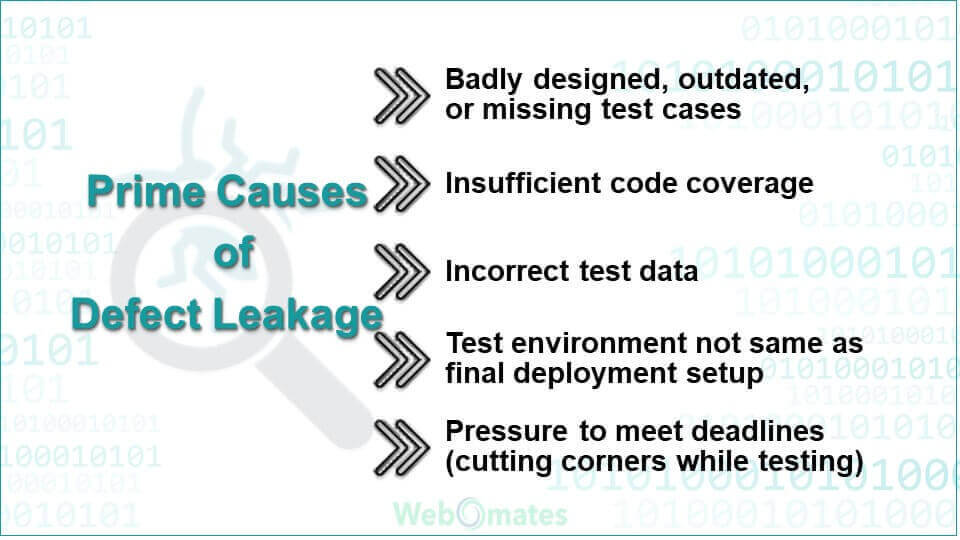
How does Defect leakage impact you?
High defect leakage number signals issues with the software testing process. However, a certain amount of known defects are allowed to go with the releases and are addressed in the next build. Here, the operative word is “known”. This could be a conscious business decision and in some cases, due to technical reasons.
The real challenge is to deal with the defects discovered after the release.
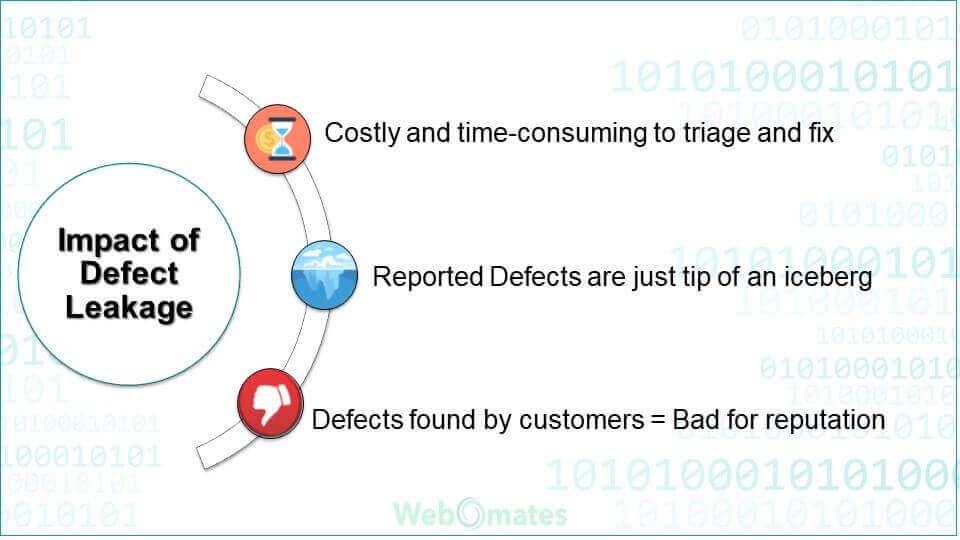
How does Defect Leakage impact QA cost?
Defects found in the field are costly and time-consuming to triage and fix.
A study conducted by IBM a few years ago states that the cost to fix bug grows over time. A simple way to understand it is,
- Cost of fixing a defect in the analysis and design stage = $1
- The cost of fixing a defect in testing is more than $10
- The cost of fixing defects after release will be more than $100
The worst is yet to come…
The cost of fixing a defect in the maintenance phase is 1000 times more.
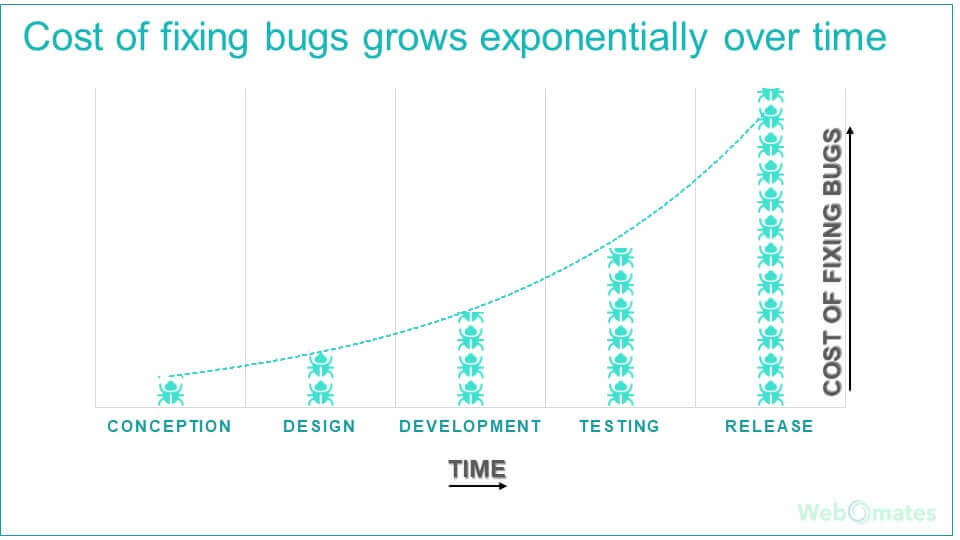
The Great unknown?
Customers tend to report severe defects only. There is a high chance that low-impact defects were not reported. But that does not mean that they cannot have an impact later. So, never stop looking, you might discover something unexpected.
Your reputation is at stake
Defects found by customers can harm your standing with them and impact your brand value.

How to prevent Defect Leakage?
Be proactive and not reactive in your approach. Up your quality game.
As the first line of defense, prevent the defects from happening, and if that fails then identify and rectify the issues to limit the damage.
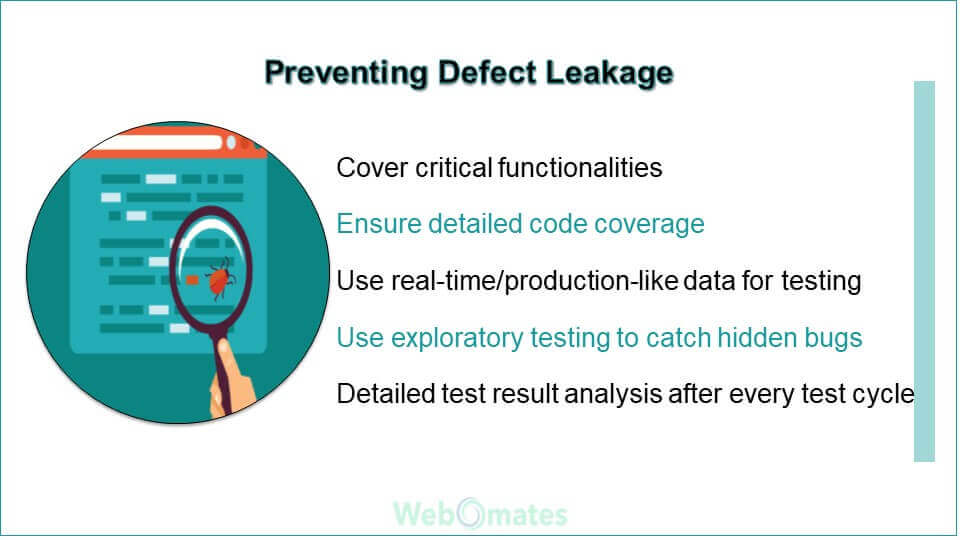
Cover critical functionalities
Make sure that your test plan covers all the relevant test cases. DO NOT MISS any scenario. Difficult? Yes, but doable.
Detailed code coverage
Consider all possible conditions, data values, and boundary values to cover all logical paths, especially for sensitive and critical code segments.
Use real-time/production-like data
Ensure that the test data is just like production data to test real-time conditions. Dummy data will just give you a false sense of security when the tests are cleared.
Use exploratory testing
Do not underestimate the superpower of exploratory testing to catch hidden bugs.
Detailed test result analysis
Share, analyze and act on detailed test reports after every test cycle. Collaboration and communication hold the key to quicker resolutions.
How Webomates can help to reduce Defect Leakage?

Find and fix bugs before customers find them. This is how we can help…
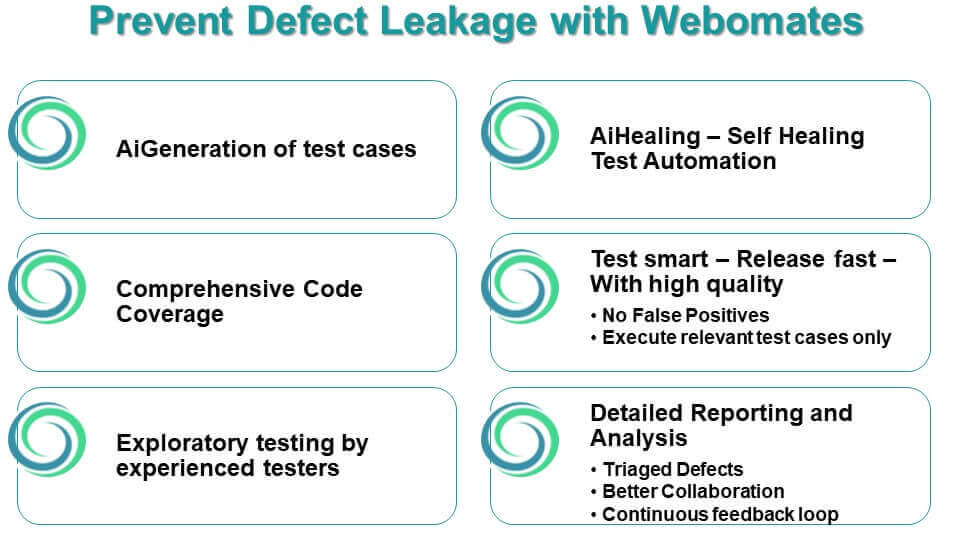
- AiGeneration of test cases
Our ingenious AI-based test engine covers all your bases and eliminates the possibility of missing any test case.
- AiHealing® of test cases
Our patented AiHealing® gives the developers a silver bullet with its self-healing capability. Your test cases are always up to date.
- Comprehensive code coverage:
We offer code coverage as an optional add-on to our AI-based test automation services. Click here to know how we do it.
- Test smart – Release fast – With high quality
o Automate and execute the right test cases with us.
o Shift Left the testing by executing mini test suites in development in conjunction with the developers as they code.
o Eliminate false positives with help of our AI Defect Analyzer which can quickly identify and report False Positives and True Failures on any kind of application.
- Exploratory testing by experienced testers
Our testing team has years of experience in conducting exploratory testing. Be assured, your software’s quality is in good hands.
- Detailed reporting and analysis
Our exhaustive test failure analysis process generates a detailed report with triaged defects. This report is shared with the Dev and QA team via real-time alerts, aiding them in faster decision-making for bug fixes.
Do you want to know how Webomates has helped one of the Big Three telecommunication providers reduce defect leakage by 84%? Download the whitepaper by clicking here.
So are you willing to go bug hunting with Webomates? If yes, then drop a message at info@webomates.com and someone from our team will reach out to you.
If you liked this blog, then please like/follow us Webomates or Aseem.
Read Next –
Test Automation vs Manual Testing
Exploratory testing in software testing
Tags: AI based testing, Artificial Intelligence, Defect leakage, DevOps, Test Automation

Leave a Reply